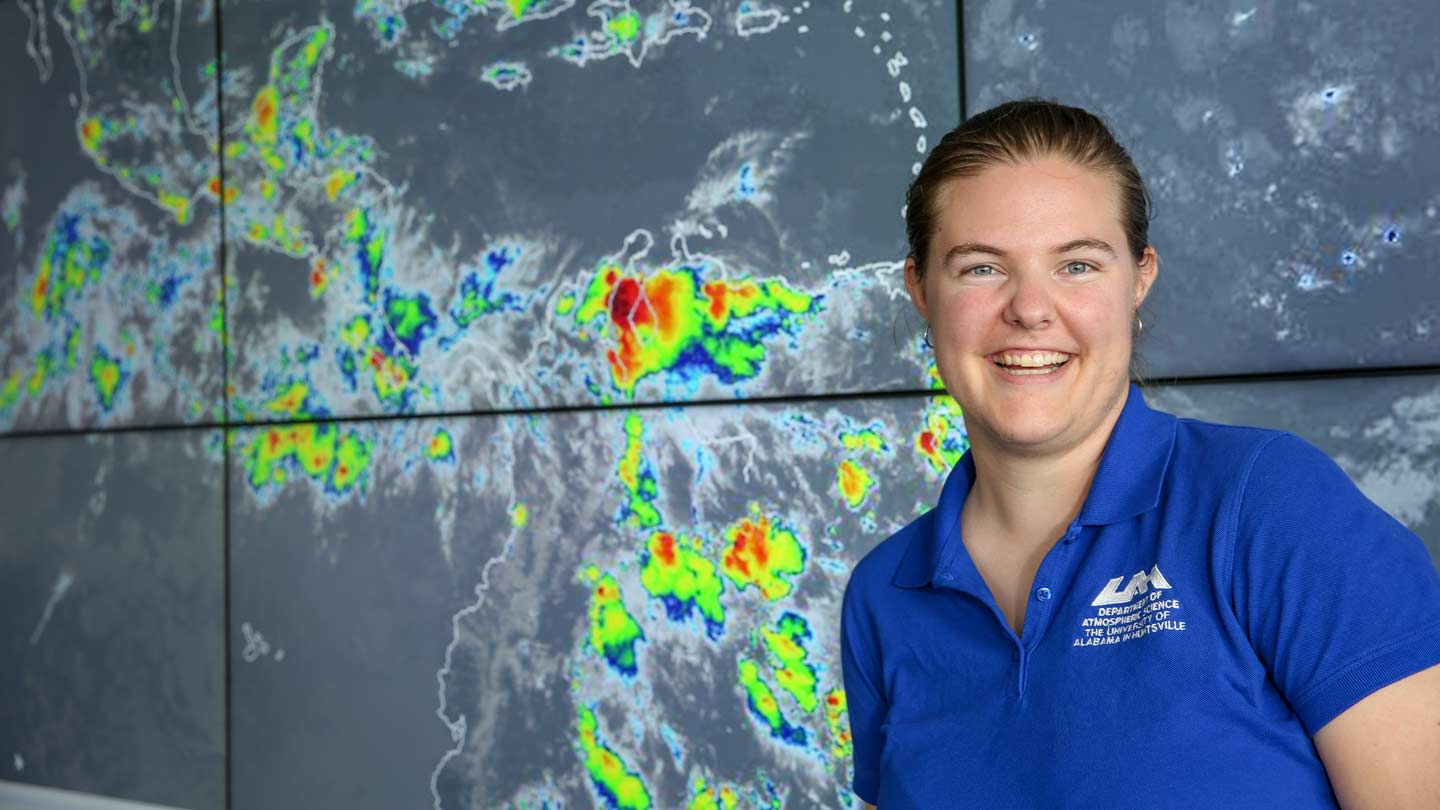
By Diana LaChance, Sept. 21, 2018
While the threat of severe weather may strike fear into the hearts of most people, Lena Heuscher is not most people. In fact, as a Ph.D. candidate in the Department of Atmospheric Science at The University of Alabama in Huntsville (UAH), she sees the arrival of high-impact events as an opportunity to learn more about how they can be characterized to improve prediction models and better protect both life and property. "I have always enjoyed the weather – all weather," says Heuscher, who grew up in the small town of Choteau, Mont. "Living in a rural community where agriculture is the main part of life, it was easy to see the devastation caused by weather. Whether it’s a hail storm wiping out farmers’ crops three years in a row while the other fields remain untouched or a 100-year flood sweeping by and changing people’s lives forever, it becomes very real."
After graduating from Montana State University with a bachelor’s degree in physics, Heuscher earned a master’s degree from the University of Nebraska-Lincoln, where she conducted research on hail variability in supercell storms and its response to environmental variables. Here at UAH, however, her focus is on lightning, and in particular, using satellite-observed lightning and precipitation processes to develop markers for extreme storms. "Because there are a lot of different definitions of extreme storms, I’m trying to see whether or not there is a characteristic that is unique to them by looking at lightning from space," she says, suggesting an increased flash rate or density as possible examples. "But I want my research to be application-based, because if you can quickly identify whether or not a storm is extreme, then you can better prepare and get those warnings out."
Read More:
https://www.uah.edu/news/people/agu-scholarship-recipient-uses-space-based-observations-to-help-define-extreme-weather